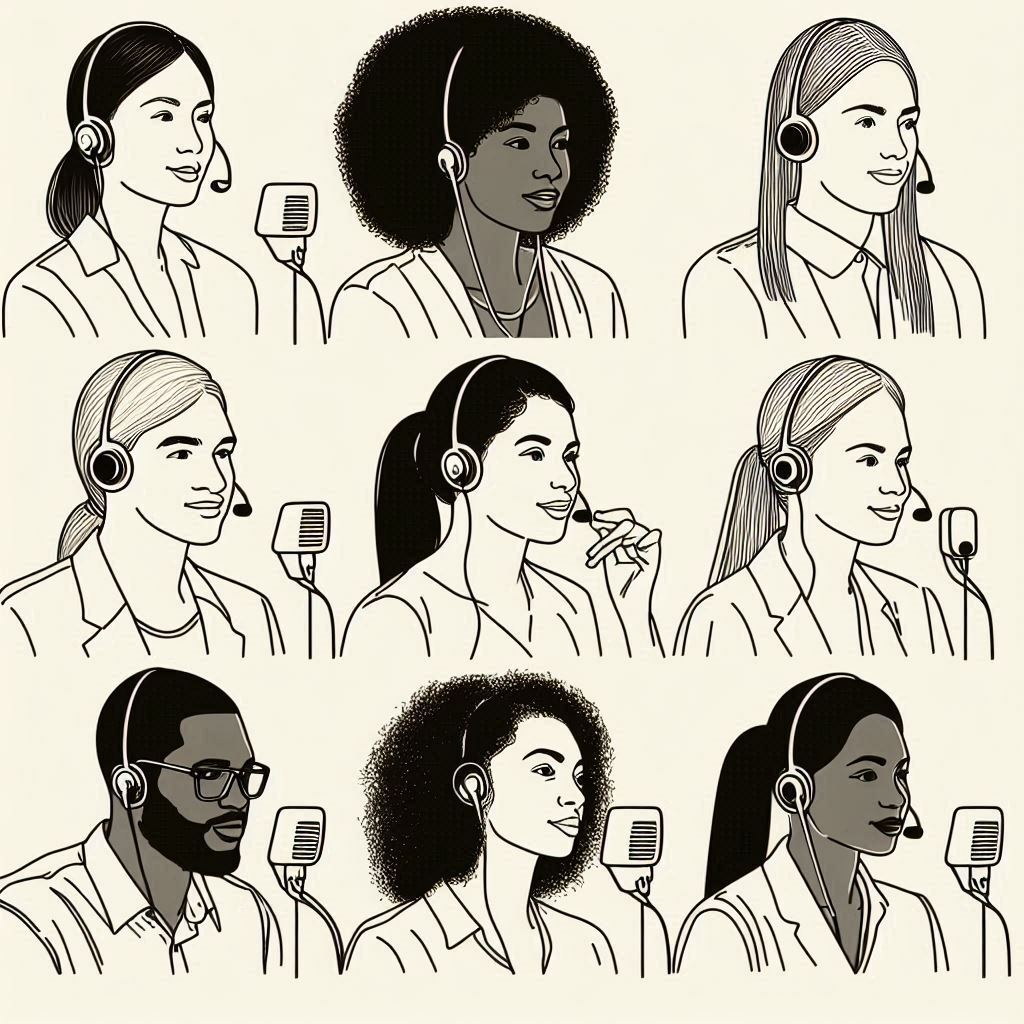Live transcription technology is reshaping business communication by enhancing efficiency and inclusivity. It makes meetings and webinars more effective, allowing participants to engage fully in discussions without the distraction of note-taking. This feature ensures everyone can follow along easily, making it particularly beneficial for remote teams facing challenges like poor internet connections or language barriers.
Moreover, live transcription promotes accessibility and inclusion by offering instant written translations of spoken words for individuals with hearing impairments or those learning a new language. These real-time transcriptions make webinars, podcasts, and live events accessible to everyone, ensuring no one is left behind due to communication barriers.
Educators and language learners can use the power of realtime voice recognition as a tool for improving listening comprehension, vocabulary skills, and overall fluency. By comparing written transcripts with spoken words, they can practice pronunciation, grammar, and other essential language skills more effectively. For journalists, researchers, and students, live transcription increases productivity in note-taking by eliminating the need for manual transcriptions during interviews or lectures. This allows them to focus on analyzing content and synthesizing insights, leading to more efficient use of time and resources.
Business leaders and data analysts can gather valuable insights from customer interactions through speech analytics enabled by live transcription technology. Analyzing call center conversations and sales calls provides data on customer sentiment, common issues, and overall service quality, helping companies improve their products, services, and customer support strategies.
Creative industries like film production benefit from live transcription as it facilitates collaborative workflows. Teams can capture dialogue during shoots or review sessions for faster editing and script adjustments, saving time and resources while maintaining high-quality standards essential in these fields.
In summary, the power of live transcription technology is undeniable. Its ability to revolutionize communication and accessibility across various industries makes it a valuable asset for businesses, educators, language learners, and professionals alike.
Effective Meetings and Webinars with Live Transcription

Realtime speech-to-text technology is transforming meetings and webinars by eliminating the need for manual note-taking. Participants can now concentrate fully on discussions, fostering better engagement and understanding. This feature ensures that everyone follows along easily without missing any crucial points.
For remote teams grappling with communication challenges such as poor internet connections or language barriers, live transcription offers a pioneering solution. It allows team members to access written records of the conversation in real-time, enhancing inclusivity and ensuring clarity.
Moreover, live transcription technology supports collaboration among team members by providing an accurate and immediate reference point for action items and decisions made during meetings. This not only saves time but also minimizes misunderstandings that may arise from unclear notes or recollections.
Incorporating instant speech transcription into your business communication strategy ensures smoother, more productive meetings and webinars. It empowers participants to engage fully in discussions while providing a comprehensive record of the conversation for reference and follow-up. This innovative technology is essential for enhancing efficiency, inclusivity, and overall effectiveness in today’s fast-paced work environment.
Enhancing Accessibility and Inclusion through Instant Written Translations

Live transcription technology plays a pivotal role in enhancing accessibility and promoting inclusivity for all participants. For individuals with hearing impairments or those learning a new language, instant written translations of spoken words during webinars, podcasts, and live events ensure that everyone can follow along easily.
This real-time audio transcription feature eliminates communication barriers, making it easier for people to engage actively in discussions regardless of their auditory abilities or language proficiency. It provides an equal opportunity for all participants to access information and contribute meaningfully to the conversation.
Moreover, realtime voice recognition supports a more engaging experience by allowing users to customize settings such as font size, color, and background for optimal readability. This personalized approach caters to individual needs, fostering a sense of belonging and participation in diverse audiences.
Incorporating live transcription into your events not only adheres to accessibility guidelines but also demonstrates a commitment to inclusivity. By making your content accessible to everyone, you create a welcoming environment that encourages open dialogue and fosters meaningful connections among participants from various backgrounds.
Increasing Productivity in Note-Taking

Live transcription technology revolutionizes note-taking for journalists, researchers, and students by providing real-time audio transcriptions during interviews or lectures. This eliminates the need for manual transcriptions, allowing these professionals to concentrate on analyzing content and synthesizing insights.
With live transcription, users can save time and resources that would otherwise be spent on post-event documentation. Instead, they can channel their energy into engaging with the material more deeply, fostering a better understanding and retention of information.
Moreover, this technology offers an accurate and comprehensive record of discussions, ensuring no crucial points are missed. It enables professionals to refer back to specific moments within interviews or lectures easily, streamlining the research process and enhancing overall productivity.
By incorporating live transcription into their workflow, journalists, researchers, and students can maximize efficiency in note-taking while maintaining focus on gathering valuable insights from their sources. This empowers them to deliver high-quality work with minimal effort invested in administrative tasks.
Speech Analytics for Business Intelligence

Leveraging live transcription technology for speech analytics offers businesses a powerful tool to gain insights from customer interactions. By analyzing real-time audio transcriptions of call center conversations or sales calls, companies can extract valuable data on customer sentiment, common issues, and overall service quality.
Live transcription enables detailed examination of each interaction, revealing trends and patterns that might otherwise go unnoticed. This information is crucial for improving products, services, and customer support strategies by addressing specific concerns and enhancing the overall customer experience.
Business leaders and data analysts can utilize these insights to make informed decisions about resource allocation, staff training, and process optimization. Identifying areas where customer satisfaction can be improved allows organizations to proactively address potential issues before they escalate, fostering a positive reputation and building customer loyalty.
Moreover, live transcription facilitates quick response times during calls by providing instant written translations of spoken words. This ensures that agents understand customer needs accurately and can provide timely assistance without the delay caused by language barriers or hearing impairments.
Incorporating speech analytics driven by live transcription into your business intelligence strategy empowers you to stay ahead of industry trends, optimize operations, and ensure top-notch service delivery at every touchpoint with your customers.
Facilitating Collaborative Workflows
In creative industries such as film production, live transcription revolutionizes collaborative workflows by enhancing efficiency. By employing real-time audio transcription during shoots or review sessions, teams can accurately capture dialogue, ensuring every word is recorded for future reference.
This instantaneous documentation eliminates the need for manual note-taking, saving precious time and resources that would otherwise be spent on post-production adjustments. With live transcription, film professionals can focus on their craft while maintaining high-quality standards essential in these fields.
Moreover, having immediate access to written dialogue facilitates faster editing processes and script revisions. Editors can easily search through transcripts to locate specific lines or scenes, expediting the decision-making process for cut decisions or pick-up shots.
Incorporating live transcription into your creative workflow allows you to enhance collaboration, reduce turnaround times, and maintain exceptional quality throughout every stage of production.
Advancing Language Learning through Live Transcription

Live audio transcription emerges as a powerful tool for language learners aiming to enhance their listening comprehension, vocabulary skills, and overall fluency. By transcribing conversations or lectures in real-time, students can practice alongside native speakers without the pressure of immediate response.
Comparing written transcripts with spoken words allows learners to identify pronunciation nuances, grammar structures, and colloquial expressions that might be missed during live interactions. This immersive approach facilitates a deeper understanding of the target language, ultimately improving fluency more effectively than traditional methods.
For educators, integrating live transcription into lesson plans provides an engaging way to assess students’ comprehension levels while offering immediate feedback on pronunciation and grammar usage. As learners progress through various stages of language acquisition, real-time audio transcription serves as an invaluable resource for tracking improvements and identifying areas needing further attention.
In addition, realtime voice recognition fosters inclusivity in multicultural classrooms by accommodating diverse learning styles and supporting those with hearing impairments or processing challenges. By providing visual cues alongside auditory information, educators can create a more accessible environment that promotes active participation from all students.
Using live transcription as part of your language-learning journey accelerates progress toward fluency while enhancing communication skills across multiple contexts.
